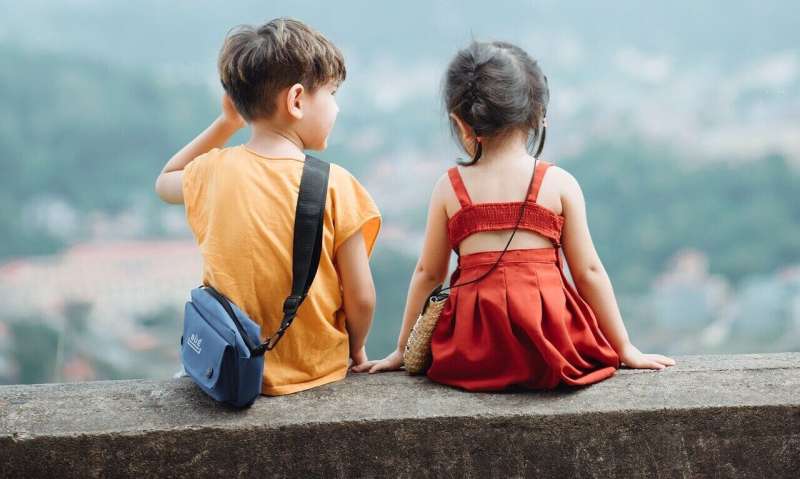Children, the pandemic, and long-term mental health consequences

By now, we have a relatively good general understanding of COVID-19’s physiological effects on children and teens: Compared to adults, fewer young people have gotten the virus, and those infected generally tend to have milder symptoms or none at all. What’s far less known are the pandemic’s psychological effects on this population, both in the short and long term. It’s a question that researchers from Penn’s School of Nursing and the Children’s Hospital of Philadelphia (CHOP) aim to address in a new Pediatric Nursing paper.
“The COVID-19 pandemic is a severe traumatic experience, whether from the social isolation or from a parent or loved one getting sick or dying,” says Marcus Henderson, a Penn Nursing lecturer and practicing adolescent psychiatric-mental health nurse. “They’re going to carry this experience with them the rest of their lives.”
Last summer, Henderson published a paper in the Online Journal of Issues in Nursing on the psychological effects of COVID-19 on the general population. The work got him thinking about where the pandemic and mental health intersect for children and adolescents. Around the same time, at the behavioral health hospital where he works, he began seeing more pandemic-related admissions from that age group.
His patients—primarily children of color from low-income families—began expressing a range of challenges, from a lack of support during online schooling to feeling socially isolated. “Some already experienced housing and food insecurity before COVID, and now they weren’t getting reliable meals in school. Now they weren’t getting to see their school counselor, their school nurse.” Seeing these factors converge for so many prompted Henderson to reach out to Sharon Irving, associate professor at Penn Nursing and a critical care nurse practitioner, to discuss how they might contribute to this conversation.
Together with Cynthia Schmus, a CHOP pediatric nurse practitioner, and Catherine McDonald, an associate professor in the School of Nursing and CHOP, Henderson and Irving wrote a paper geared toward both pediatric nurses and the general public. The work speaks to the immediate and lasting mental health consequences the pandemic will have for children, and relays to pediatric nurses in any setting that they are well-positioned to assess and intervene.
“We have lost more than 400,000 people to this pandemic. On no level are we trying to downplay the severity and importance of that,” Irving says. “At the same time, there’s this population of children that, while they aren’t experiencing COVID as an infectious illness at the same rate as adults, there are other areas affected that we don’t even know the full scope of yet.”
The authors felt the best approach to make this point was to present two case studies based on real patients: 9-year-old Alex and 16-year-old Cristina.
Alex lives in the suburbs of a large city with his married parents, his businessman dad and his mom, who stays home with his 3-year-old sister. Alex, who was diagnosed with attention deficit hyperactivity disorder (ADHD) at 7, has always had support to manage his mental health issues, including an outpatient provider for psychotherapy, a psychiatric provider for medication management, and a therapist who conducts home visits and family therapy sessions.
Cristina lives in a large urban city with her divorced mother—who, as a nurse, is an essential worker—as well as her 11-year-old brother and 7-year-old sister. The children spend every other weekend with their dad and, given their mother’s work schedule, many afternoons and evenings with their maternal grandparents.
For both Alex and Cristina, the pandemic has meant significant loss but in different ways. Alex lost his health care providers and school network, causing the management of his ADHD to regress. Cristina lost her entire social network—friends, basketball team, family—plus took on additional responsibility at home in caring for her siblings. This led to stress, anxiety, and a suicide attempt. She reached out to a mental health professional for help but had trouble getting an appointment, partially because of availability, partially because of insurance restrictions.
Children like Alex and Cristina are part of one of the most vulnerable populations likely to experience long-term consequences from COVID-19, a situation that’s exacerbated for communities of color, the researchers note.
“Using two case studies to frame this really points out issues we’re all experiencing,” Henderson says. “People can start to understand, ‘Wow, this is what my child used to have and now they don’t. This could happen to them. They could develop a mental health problem.’ We also can’t not acknowledge the role that structural racism has played in getting us to this point. Structural racism as a public health crisis is the other pandemic we’re dealing with, an added factor and stressor for these children.”
Despite the warning bell this work rings, Irving says there are still silver linings, namely families spending more time together but also gaining a better understanding of what goes into educating their children. “If there is a good—and this is a big if—if there is a good to this pandemic, it ripped off the Band-Aid as to just how widespread the structural racism and inequities in health care are in our country, in our society,” she says.
In the future, Henderson says he’d like to dig deeper into how the challenges around COVID-19 affect different-aged children. For now, he and his colleagues are focusing on how to take in and address what the pandemic has brought to the surface. “Adults get to a point where they’re not going to change so much,” he says. “But we can help change the trajectory of a child.”
Source: Read Full Article
